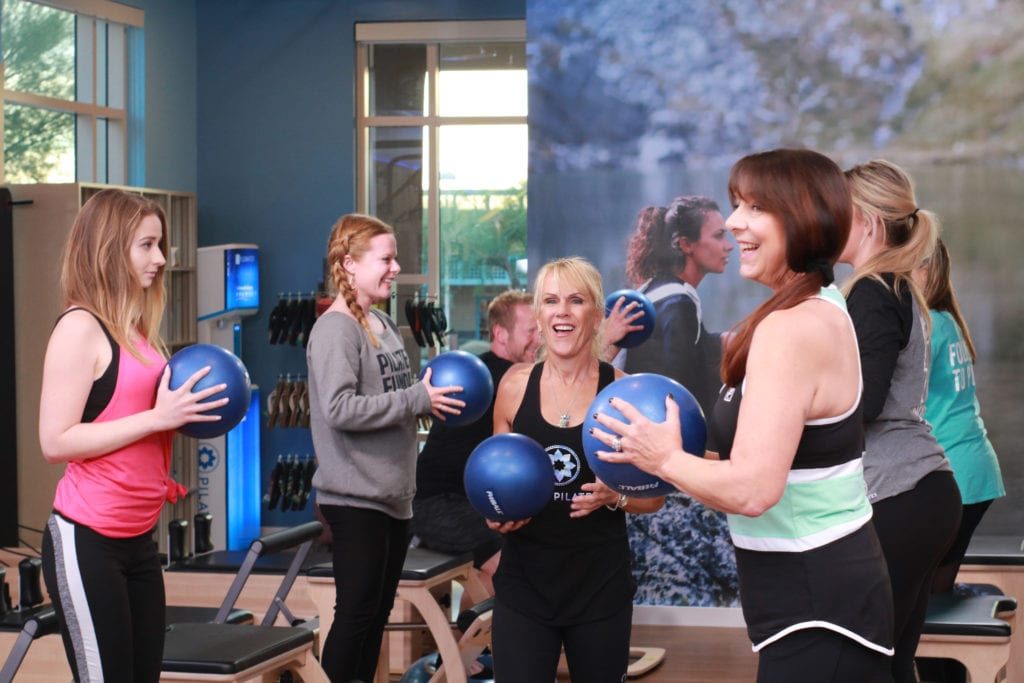As Pilates practitioners, we’re always looking for props to aid us in further challenging our bodies, as well as ways to provide modifications for injuries and special populations. When we need physical support, we turn to the bottomless tool box of Pilates to find with variations for everyBODY. Though simple, the Pilates Ball is one of our most versatile tools, supplying the Pilates practice with numerous benefits including spinal support, adductor activation, lower body alignment, and stability enhancement.
Using the ball for lumbar support
One common and crucial use for the Pilates Ball is lumbar support. Placing the Ball between the lower back and whatever the body is seated on gives physical feedback, which in turn creates a forced imprint of the spine in a safe environment. We use this prop constantly for this purpose, especially for those new to Pilates, as well as those struggling to keep pelvic stability when lying supine or in a c-curved, flexed lumbar position. By using the Ball in this position, you’re more aware of and able to maintain your correct form while moving through exercises. The abdominals are also forced into a slightly contracted state when you use the Ball in this way, which further aids in spinal articulation.
Another advantage to using the Pilates Ball is adduction activation. Our adductor muscles – the muscles that contract to move your body, such as the muscles of the inner thighs – tend to be some of the most underused muscle groups. For example, by activating the inner thighs to pull the legs together, we create numerous benefits for the entire body. Adduction not only simply draws the legs closer to the midline of the body, but also supports pelvic floor activation and fascial tensegrity – a kind of tensional force within our connective tissue that is crucial to the upright structure of the skeleton. When placed in between the legs, the Ball allows clients to keep proper hip-knee-ankle alignment. Simply placing the prop in this position for clients with knocked knees or overdeveloped quadriceps can significantly improve their form.
Using the ball to enhance balance
What about balance and stability? We hear these terms over and over in Pilates. Adding the Pilates ball to basic movements can create stability challenges by creating a safely uneven surface to navigate. For example, the Pilates Ball can be placed under the lumbar area while lying down for a balance challenge that provides deeper intrinsic muscle activation. Even a lateral flexion series with the Ball placed in the space between the ribs, the hips, and the floor mobilizes our spine in a range of motion that is one of the most underused planes, while inviting the obliques and deeper stabilizers along for the ride! Strength and mobility in the frontal plane, along with a great sense of balance, keeps us safe from injury and gives us more endurance for the day ahead.
There are endless options for this fun prop. The Pilates Ball sparks creativity and eagerness to execute Pilates sessions with support, proper form, and deeper personal challenges. Hop in to a Club Pilates studio to try out the Pilates Ball for yourself!
| Try a FREE Intro Class! |




